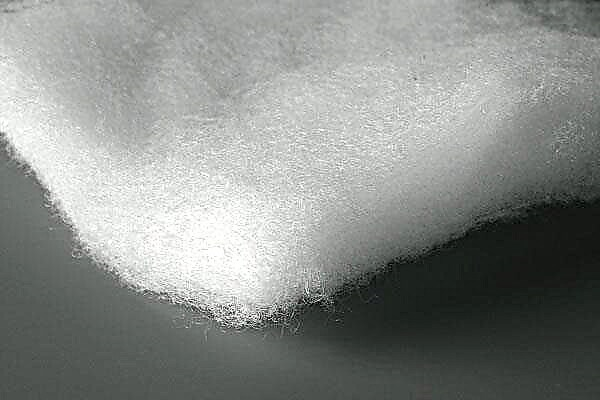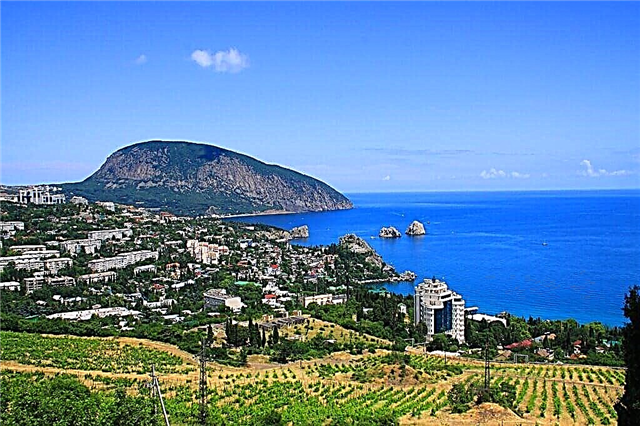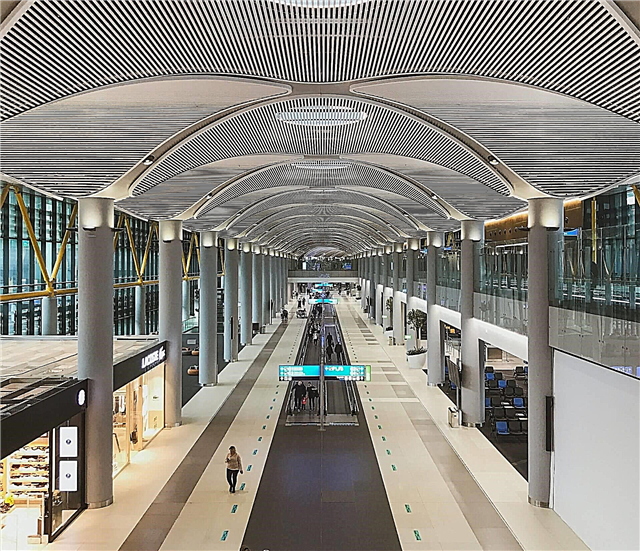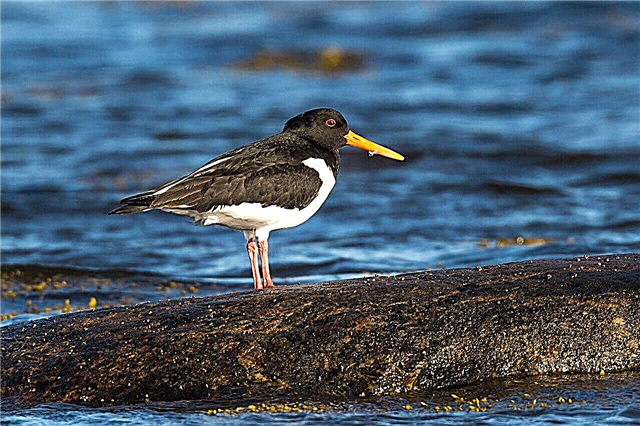Karelia is a land of special northern natural beauty. To save it, many natural landscape complexes are included in the list of specially protected areas by the state. The most famous nature reserves are the Kivach Nature Reserve, Paanajärvi National Park and the Vottovaara natural monument. Protected areas are located not only on land. National parks such as the Ladoga Skerries or the Western Archipelago are located among the water.
Many sanctuaries and parks occupy a large area. In such large areas as the Soroka reserve or Vodlozersky park, remote corners do not have the slightest signs of civilization. There are also small natural monuments - the springs of Onezhsky, Sulazhgorsky and Kroshnozersky. The protective zone around them, several tens of kilometers, is designed to preserve the purity of the spring water.
The most interesting and beautiful protected places
List, photo with names and descriptions of federal protected areas.
National Park "Ladoga Skerries"
The park with an area of 122008.3 hectares is located on the northwestern and northern shores of Lake Ladoga. It is a natural complex of 650 islands with rocky cliffs, separated by small straits. On the territory of the park there are many monuments of historical and cultural significance - parking lots, ancient settlements, burial grounds of the 6th-4th centuries BC. Boat trips between the islands are popular with tourists.

Reserve "Kivach"
Located in the Kondopoga region. The waterfall of the same name with a height of 10 meters is especially attractive for tourists. Near the waterfall there is a nature museum and an arboretum. Hiking trails in the reserve have been developed for tourists. This is a great opportunity to appreciate the beauty of the local landscape - small lakes in coniferous forests. The trees are hundreds of years old. About 100,000 people visit the reserve annually.

Paanajärvi National Park
The park is located in the border zone of the Louhsky region near the Arctic Circle. The park owes its name to a beautiful lake in rocky breaks. The attractions of the park include the 576 meter high Nourunen mountain range, as well as the unusual "hanging" swamps on the slopes of the mountains. You can move around the park to lakes and waterfalls only with the permission of the administration and along specially equipped paths.

National Park "Kalevalsky"
The park is located near the border with Finland in the Kostomuksha District. The park was created to preserve the unique old-growth pine forest with the flora and fauna of the northern taiga. The historical heritage is of particular value - the sites of different peoples of the Stone Age. To inspect the natural and cultural monuments in the park, an eco-trail "Sacred stones of shamans" has been laid, several picnic points have been arranged.

Reserve "Kostomukshsky"
It was created in 1983 on the territories of the Muezersky and Kalevala districts to neutralize industrial pollution. The protected area is covered with northern taiga forests with lakes and flowing water bodies. Ecological tourism is practiced on the territory of the reserve. Popular routes among the visitors of the reserve are the programs "Trail of peddlers", "Amazing nearby" and "Hike to Munanki".

National Park "Vodlozersky"
A large park with an area of 468,000 hectares is located in the Onega region of the Arkhangelsk region and the Pudozh region of Karelia. Tourists are not allowed to enter the protected area, but there are various opportunities for recreation in the recreational area. Rafting with a length of 180 km along the Ileksa River is popular. Eco trails are laid in the park, where guides prepared for work in the wild go with tourists.

Archaeological complex "White Sea Petroglyphs"
A natural monument with rock carvings of the primitive era is located on the islands of the Vyg River in the Belomorsky region. Their age is dated back to the 4th-3rd millennium BC. Drawings are drawn in groups, in total there are about 2000 drawings of animals, people, hunting scenes, there is even an image of an ancient man on skis. The territory of the complex has been ennobled, bridges and paths have been laid among the rocks, signs and benches have been placed.

Zoological reserve "Kizhi"
The reserve covers an area of 500 km². The reserve includes the archipelagos of Lake Onega, part of the coast of the Zaonezhsky peninsula, and Black Island. The main attractions are the swamps near the village of Boyarshina, South Oleniy Island. The cultural epicenter of the reserve is the Kizhi Ethnographic Museum with ancient buildings, including churches. There are equipped areas for resting with tents.

Zoological reserve "Olonetsky"
The nature protection zone is located in the south of Karelia on the eastern shore of Lake Onega. These are the habitats of rare animals and birds - elk, Ladoga seal, osprey, white-tailed eagle. The Segezha and Ropaki bogs are especially valuable natural monuments. The landscapes of the reserve are diverse - birches, pines, black alder and spruces grow here. On the territory of the reserve, unorganized tourism is prohibited, as well as picking berries and mushrooms.

Botanical Garden of Petrozavodsk State University
Located in the northern part of the coast of the Petrozavodsk Bay of Lake Onega. This is a territory with a unique landscape created by glaciers and coniferous forest on the slopes of a relic volcano. The garden is open for visits by independent visitors, they conduct excursions to the expositions and the territory of the park, as well as to the Devil's chair and to the Yazycheskaya glade. The garden's expositions are represented by hundreds of plant species from around the world.

Natural monuments in Karelia
The most interesting and beautiful regional natural monuments.
Waterfalls "White Bridges" (Yukankoski)
A unique natural monument located in an untouched corner of nature in the northern Ladoga area. The free fall height of the waterfall during the flood period reaches 18 meters. It consists of two streams, to which wooden bridges are laid. It is difficult to get to the waterfall by car because of the bad road, so you will have to walk a couple of kilometers through the dense forest, where wild animals are found.

Mount Vottovaara
The area around the mountain is called the most mysterious and mysterious place in Karelia. This rock massif is in the Muezersky region, which is rarely included in the standard tourist routes. On the way to the mountain with a height of 417 meters, there are difficult-to-pass sections, including rivers that need to be forded. The area around the mountain is filled with bizarre dead trees, boulders and small lakes.

"Uksinskaya Ozovaya Ridge"
A natural monument of regional importance is located near Lake Louhijärvi near the town of Pitkäranta. It is a complex of lakes with many glacial boulders. In the coastal sediments, scientists find traces of natural relief dating back 2 billion years. The water in the lakes is incredibly clear, and the rocky outcrops of their shores are formed by frozen lava flows. A good dirt road leads to the ridge.

Lake Urozero
A hydrological monument in the Prionezhsky region of Karelia. It is a light-water fresh water body with an area of 13 km², the water in which is close in terms of indicators to the underground. It has an emerald blue color. The lake is located in a basin of tectonic origin, its maximum depth reaches 35 meters. A pine forest grows around the lake, there are many hiking trails. Recreation centers have been built on the banks.

Girvas section of the Suna river canyon
Geological object with amazing landscapes, located in the Kondopoga region. The ancient volcano Girvas is about 2 billion years old.The Girvasa section is a narrow canyon with steep banks. On the walls of the Suna River canyon, frozen lava flows have been preserved, in which their internal structure is clearly traced. The thickness of the lava layer reaches 100 meters; a large lava tongue is clearly visible on the very bank of the river.

Chelmuzhskaya spit
It is a sandy cape with a length of 13 km and separating the Povenets and Zaonezhsky bays of Lake Onega in the Medvezhyegorsk region. The width of the cape is only 500 meters. The spit is of glacial origin, the vegetation on it is represented by pine forests, in which mushrooms and berries grow. This is an amazing place with the beauty of the Karelian nature, far from the bustle of the city, where there is not a single building.

Shungsky section
This is a unique geological monument that has no analogues in the world. This is the only section where shungite veins - petrified oil - come to the surface. An extraordinary and picturesque natural landscape is formed by a combination of rocky and elevated surfaces, lakes and rivers, skerries and canyons in the taiga forest. This is a kind of open-air mineralogical museum, which is 1.5 billion years old.

Spring "Sulazhgorsky"
A spring with high quality drinking water is located not far from Petrozavodsk near the slopes of the Sulazhgorsk Heights. The spring has been ennobled, its waters are led out into a pipe, from which it is convenient to draw water. The proximity of the forest helps to preserve the natural quality of water. Spring water is colorless and odorless; mineralization reaches 200 mg / l. It is easy to get to the spring, local residents and guests of the republic come to it.

Spring "Onega"
The spring is located near Lake Chetyrekhverstny in the forests on the outskirts of Petrozavodsk. The colorless water of the spring is odorless, it has a magnesium-calcium composition with a mineralization of up to 130 mg / l. The protected area of the natural monument includes an area with a radius of 150 meters around the spring. The head of the spring has a flow rate of 1.5-2 liters per second. The water is used by the locals as drinking water, it is known for its purity.

Spring "Kroshnozersky"
A hydrological natural monument located in the Pryazhensky region. This is an area on the slope of the Korzinskaya ridge near the village of Kroshnozero. The spring waters form the Mill Brook, at the mouth of which a water mill was located several decades ago. Spring water is fresh with high quality and has a low mineralization up to 90 mg / l. It contains iron, which gives a yellow-brown sediment at the bottom of a container with water.

"Damn chair"
A natural monument with an unusual name is located on the slope of the former volcano Bolshaya Vaarana on the coast of Lake Onega. It is a "back" - a large stone platform on a sheer cliff with a height of 122 meters and a "seat" - a vast clearing. This is a traditional resting place for residents of Petrozavodsk and city guests. 2 billion years ago, a volcano erupted in this place, whose frozen lava formed unusual rocky outcrops.

Reserves of Karelia
The most interesting and beautiful nature reserves in the region.
Preserve "Polar Circle"
State natural zone on the coast of the White Sea, which includes the water area of the Kandalaksha Bay, together with islands and small bays. Wetland and sea birds fly here to nest. The northern landscapes of the reserve are diverse and beautiful. The diversity of the animal and rich world is best appreciated in the frost-free summer months. The area of the reserve is 46432 hectares.

Sanctuary "Soroksky"
The reserve is located on the Pomor coast of the White Sea near the town of Belomorsk. The protective zone is designed to preserve the places of mass nesting of waterfowl - swans, waders, sea ducks. The total number of special birds during their migration through the Soroksky reserve reaches several hundred thousand birds. There are several natural monuments on the territory of the reserve - the Morskaya Marya and the Bear's head mountains, the crystalline rocks of Sumostrov.

Reserve "Western Archipelago"
The reserve is a group of islands in the waters of Lake Ladoga with a total area of 19,527 hectares. The reserve includes the islands of Verkkosaari, Yalayansaari, Vossinoisaari, Sittuluoto, as well as a 2-kilometer strip of the lake shore. The beds of the Ladoga seal and colonies of gull birds - eiders, polar mallards, cormorants and long-tailed ducks - are under special protection. On the territory of the reserve, picking of mushrooms and berries, fishing and tourism are allowed.

Reserve "Keretsky"
Located on the islands of the Loukhsky region - Pezhostrov, Keret, Sidorov, Kishkin in the waters of the White Sea. The purpose of the reserve is to preserve the unique landscapes of the Keret archipelago as a nesting place for rare bird species during the spring migration period. The islands have many glacial lakes, 13-14 thousand years old. Several representatives of the fauna of the reserve are included in the Red Book - ringed seal and porpoise.

Preserve "Vazhozersky"
It is a monastic landscape reserve near Interposelka. It was formed to preserve the nature of the basins of Randozero and Vazhozeor, as well as to develop the economy of the Vazheozersky Spaso-Preobrazhensky monastery. Hunting, professional fishing and setting up tourist camps during the breeding season of birds and animals are prohibited on the territory of the reserve. Amateur fishing, picking mushrooms and berries are allowed.

Zaozersky reserve
Located on the Baraniy Bereg peninsula on the western shores of Lake Onega. The attractiveness of the landscape of the reserve is given by the numerous rocks with steep ledges and deep hollows. Natural places attract a large number of tourists to the reserve. They are interested in linden groves, bogs near Hare's Bay, accumulations of glacial boulders, old spruce and pine forests. There are climbing grounds and hiking trails.

Reserve "Muromsky"
Landscape reserve on the eastern shores of Lake Onega with an area of 32,600 hectares. It includes a large Murom swamp with an area of about 10,000 hectares. Representatives of the animal world are bears, wolves, moose, capercaillie, black grouse, white-tailed eagles. On the territory of the reserve there are unusual monuments of primitive culture - the Onega petroglyphs. Also interesting is the Murom Holy Dormition Monastery of the XIV century.

Reserve "Tolvojärvi"
The sanctuary, located in the Suoyarvi district, covers an area of 41,900 hectares. Part of the reserve is occupied by a lacustrine water-glacial area. The Tolvojoki River flows through the reserve, on which there are rapids and a small waterfall. In order for tourists to appreciate all the beauty of these places, ecological paths have been laid through the reserve. It is possible to set up parking lots and make fires only in specially designated places.

Natural parks of Karelia
Natural Park "Valaam Archipelago"
It is a group of 50 islands with a total area of 36 km². The archipelago is located 20 km from the mainland in the north of Lake Ladoga. The nature of the archipelago is predominantly taiga, most of the forests are pine. Valaam's unique natural landscape has inspired many renowned artists, composers and poets. At different times the archipelago was visited by Shishkin, Tyutchev, Roerich, Tchaikovsky, Kuindzhi.












